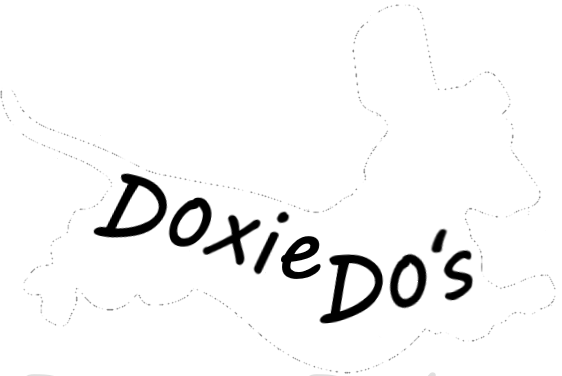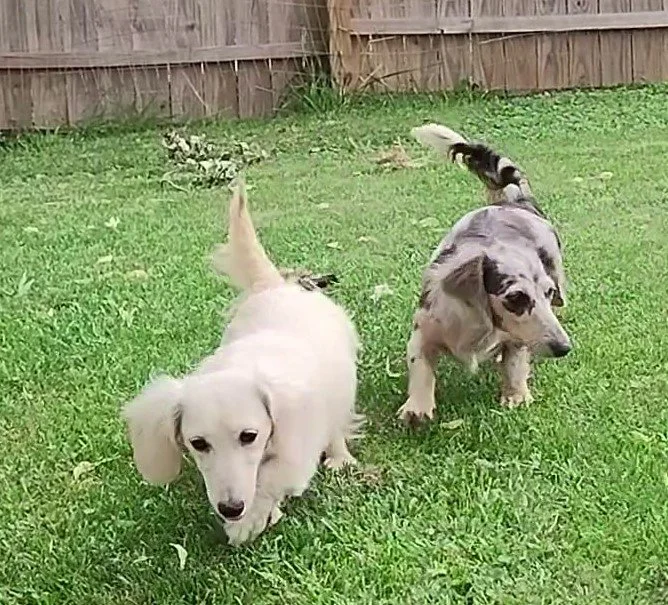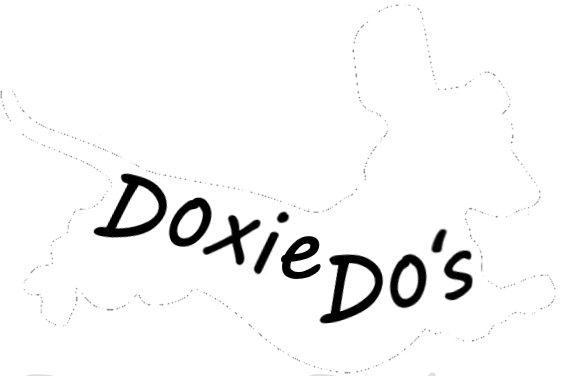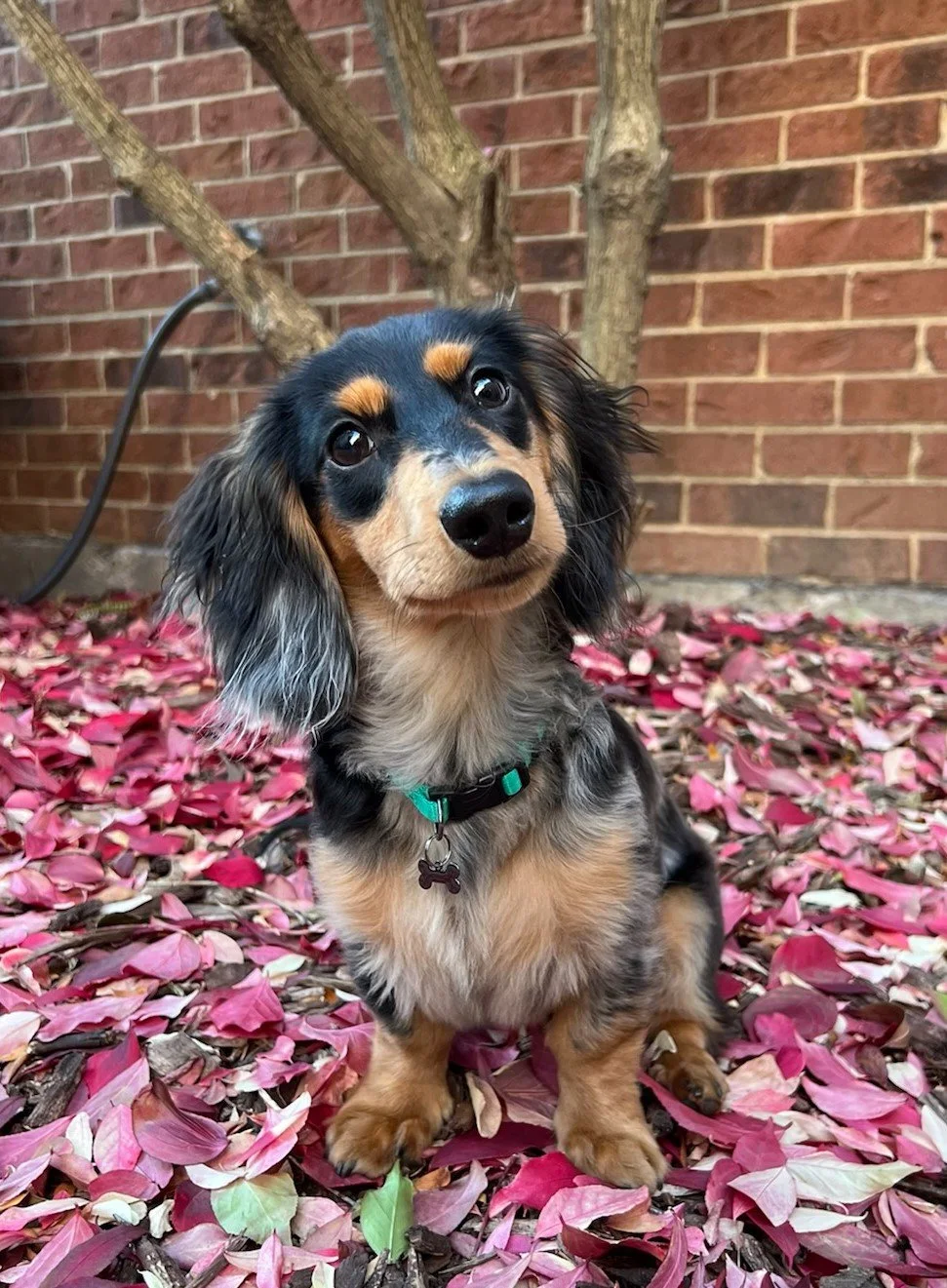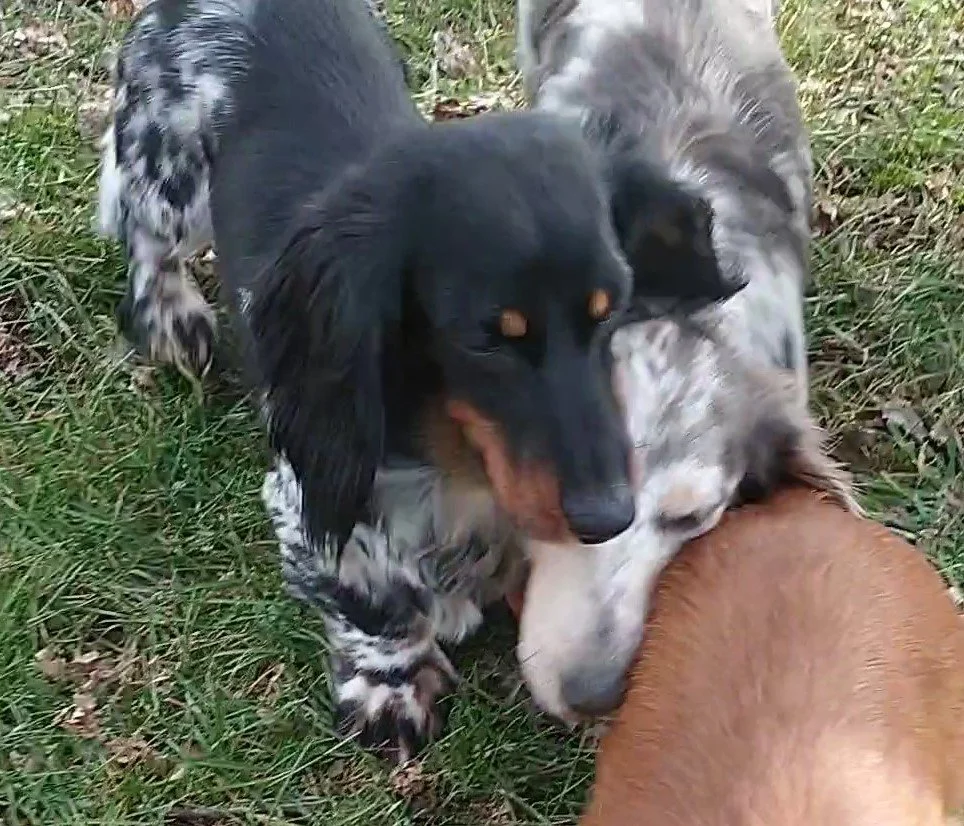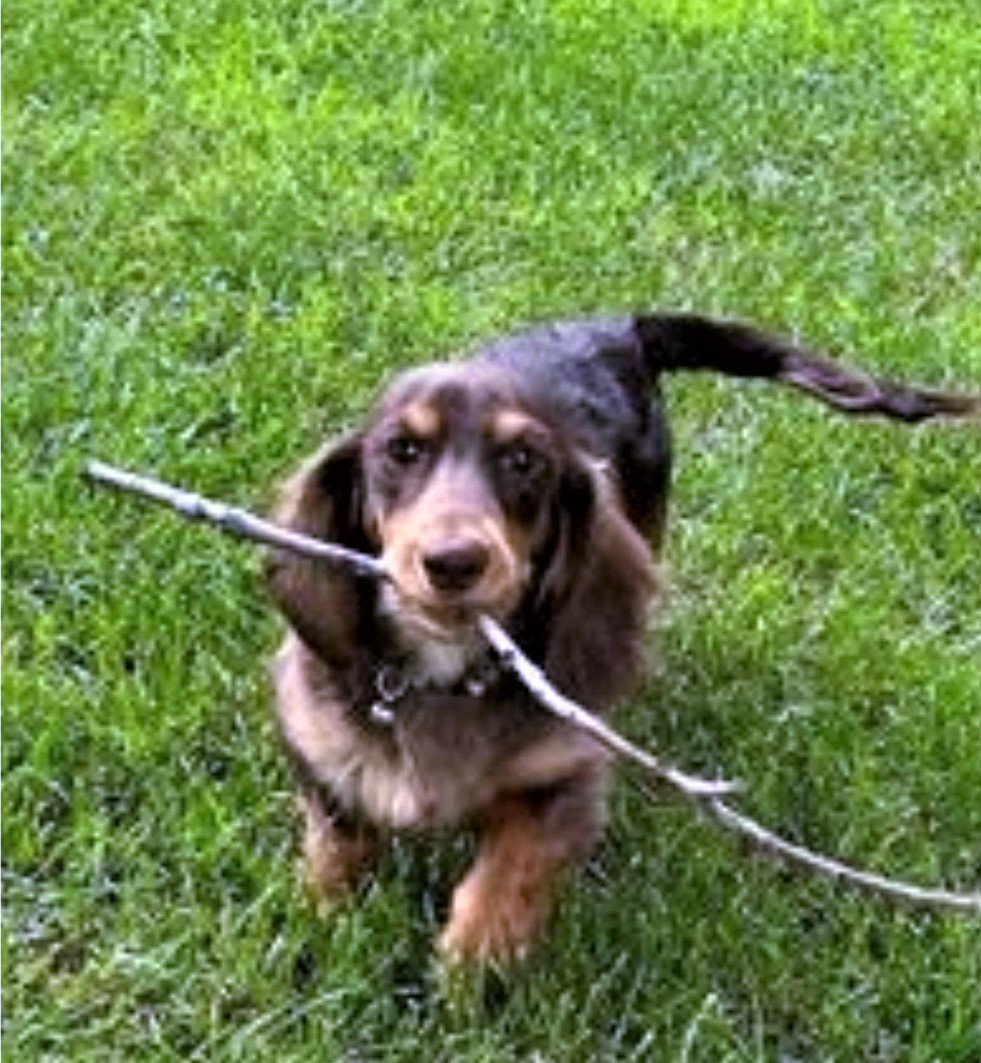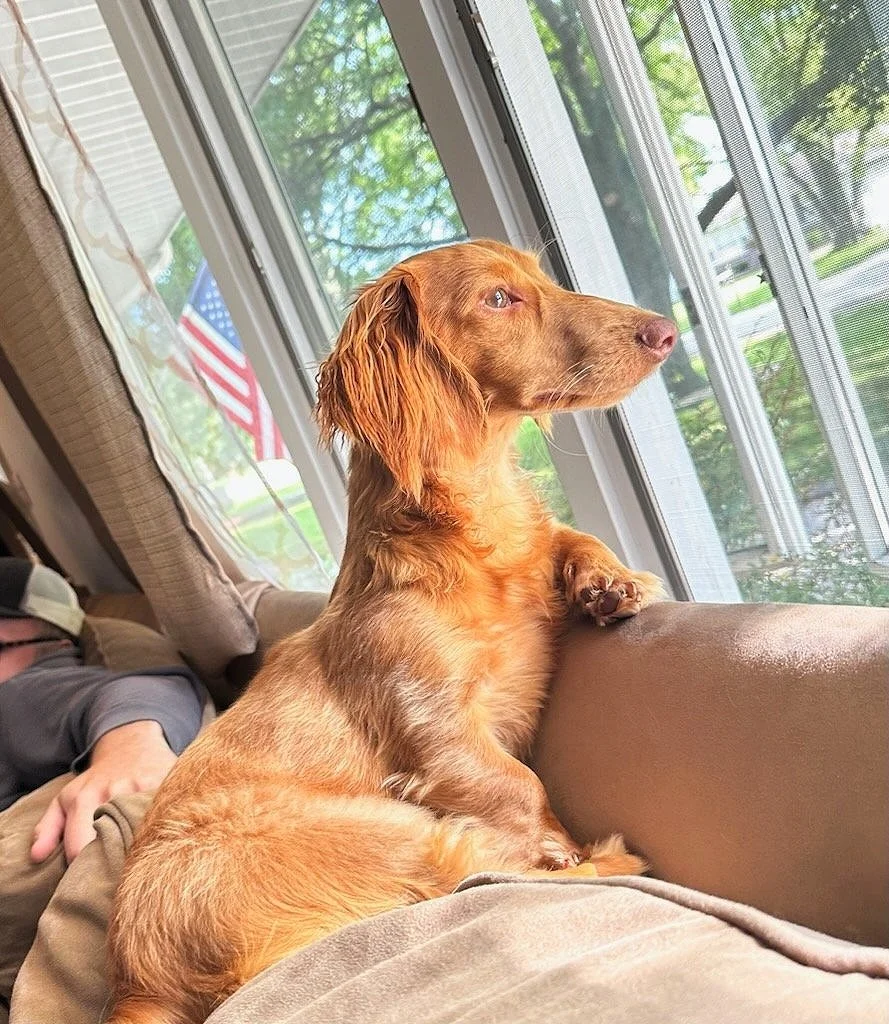A Bit About The Breed
As a miniature dachshund breeder I like to educate potential owners about the breed. Possessing a friendly, companionable personality, the Dachshund charms his way into the hearts of all who get to know him.. The fact that Dachshunds love people, especially children and the elderly, endears them to the general population.
Dachshunds are odorless and exceptionally clean dogs. The miniature is mature by 12 months of age. Dachshunds are exceptionally long-lived dogs, with many living until 12 to 14 years of age. Regardless of size or variety, the Dachshund is easily maintained and managed, thus making it a most desirable companion.
Dachshunds are very social dogs, though they are often particularly devoted to one owner. Because of the Dachshund's intelligence and versatility, the ideal owner is a person who has time to spend with his dog. Dachshund's do best when they're mentally stimulated and made to feel appreciated and like members of the family. Dachshunds come in two sizes, standard and miniature, and three coats types. A standard is 16 to 32 lbs, a miniature is 11 lbs and under. The smooth coat is short and sleek. The long coat is soft and beautiful. The wire coat is short with bushy eyebrows, a mustache, and beard.
Dachshunds come in a variety of colors and patterns. The most common colors are red and black and tan. Others are chocolate, cream, isabella, and blue. All colors can come in the piebald, ticking, points, shaded, brindle and dapple patterns. Some patterns can be mixed.
A Dachshund’s lifespan averages between 10-20 years. Dachshunds can get too comfy on the couch and are enthusiastic eaters. It is important that they get plenty of exercise so they stay trim and their muscles strong to support their long back.
A bit of Dachshund history. Dachshunds are long-bodied, short-legged dogs--small in stature but very large in personality--whose noses are so close to the ground that not much escapes their notice! In fact, their physical structure is the primary reason for their hunting expertise. This scenting ability was recognized by German hunters as early as the 15th century.
Derived from early German hounds known as Deutsche Brocken, these little dogs were called badger dogs or diggers. Eventually they were crossed with small terrier-type dogs to produce the Dachshunds we know today. With the nose of the hound, the long, low body that burrows into holes in the ground and the fearless terrier-like enthusiasm for the chase, the Dachshund is hard to beat.
In America, Dachshunds have not been used for hunting or tracking but the dogs' sterling qualities of lively character, courage and devotion have always made them popular.
In 1913, Dachshunds were listed among the ten most popular breeds in America. When World War I began, Dachshund interest declined and remained low until the early 1930's. By 1940, they were again ranked among the top ten breeds in America and maintained that standing into the 21st century.
Common Health Issues in Dachshunds
First let us realize that all breeds have their health issues, not just Dachshunds. One Dachshund issue that is under a lot of research of late is IVDD. Intervertebral Disc Disease-Due to their long backs and unique skeletal design, it’s important to prevent Dachshunds from partaking in activities that are strenuous on their spine. Ramps are a good tool for the Dachshund to use to get on and off the couch or your bed. Keep them exercised and at a healthy weight Being overweight is the leading cause of IVDD. Hypothyroidism-This disease affects dogs between one to three years of age. It can sometimes be confused with canine obesity in Dachshunds but is actually caused by insufficient production of thyroid hormones. Lymphocytic thyroiditis is most common for this breed. The most obvious symptoms are lethargy and a lack of energy which is concerning behavior for any young dog. Diagnosis can be difficult, but treatment is available and typically affordable for hypothyroidism in dogs. Eye problems-Cataracts, Glaucoma, etc. Cataracts can lead to impaired vision or canine blindness. Currently, there is no known cure for cataracts, but nutritional supplementation can strengthen the lenses of the eyes. Canine Glaucoma is a common condition for most dogs and a leading cause of blindness. It is caused by excess fluid in the eye. PRA causes visual impairment in dogs that starts slow but progresses over time. Common symptoms include dilated pupils and night blindness. Unfortunately, there is no known cure, but though years of good breeding practices, it is rare for a dachshund to get PRA. Obesity- can affect their joints, heart, and lungs. An overweight Dachshund may be at risk for other severe health issues including the IVDD or pinched nerves in the spine. Skin issues-Dachshunds can suffer from a variety of different skin problems including flea allergy dermatitis, food reactions, and Sarcoptic Mange. These conditions can be diagnosed by a vet and are treatable with medication or a modified diet. Symptoms of skin problems in Dachshunds include itchy skin, a flaky coat, hair loss, or inflamed skin. Teeth issues- Dachshunds tend to have bad teeth. Dental chews and brushing if you can manage it , are very important. There are others, but not just Dachshund issues. Diabetes, urinary tract infections, kidney problems, osteoporosis, etc. There are health problems that all of us can be prone to. This is why we need to eat a healthy diet and get plenty of exercise. Be sure to keep up on their vaccinations and well visits to the veterinarian.
